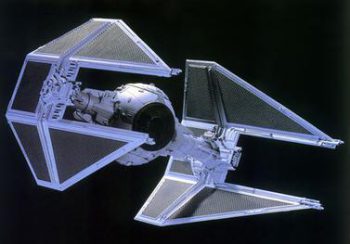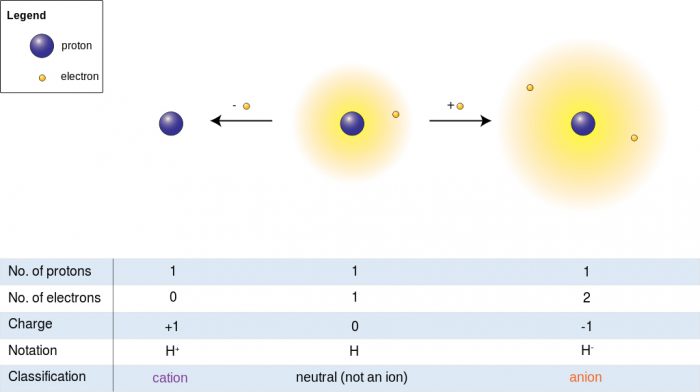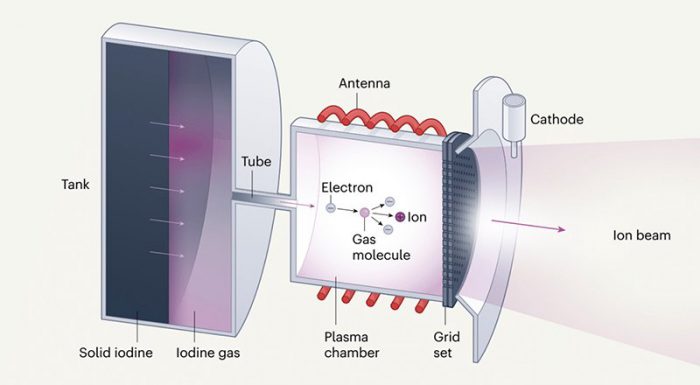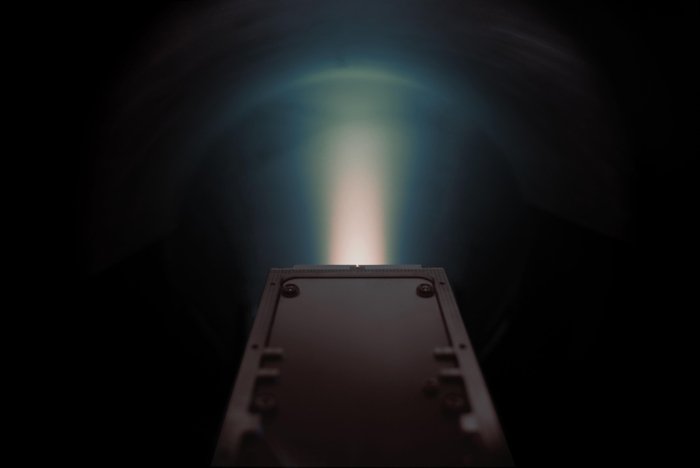Quick question: What is the coolest star fighter in all of science fiction?
Of course, there is no ONE answer, but if you said the TIE fighter from Star Wars? Well, you certainly would not be wrong!

Okay, everyone. Make the sound of a TIE fighter! (Wikimedia Commons/Lucasfilm/Disney)
But here's another question. Do you know why it's called a TIE fighter?
If you said, Because it looks like a bow tie, well, we'd say that's a great guess. But in this case, TIE actually stands for something: Twin Ion Engine. It sounds super cool, just like so many things in sci fi. But here is maybe the most surprising part.
It is a real thing.
In fact, a recent innovation in the field of the ion engines (which are used to power many things, including satellites) is one that uses iodine gas as a fuel, which is way cheaper and more available than the current fuel used, xenon. It got us thinking—why don't we talk about what an ion is?
Awesome ions

This chart shows you a hydrogen atom and its ions. (Wikimedia Commons)
An ion engine doesn't get its energy from combustion, or burning a fuel, like a rocket engine does. Instead, it uses the energy created by ions.
An ion is any particle, atom, or molecule with a net electrical charge. Whoa, what? Don't worry, we'll explain (and use emojis, too)!
The electrical charge (⚡️) of most elements are balanced, or neutral. This is because they have the same number of positively charged particles (protons) as negatively charged ones (electrons). For example, the oxygen atom has eight protons (+⚡️) in its nucleus (or centre) and eight electrons (-⚡️) orbiting around it. Eight positive buddies and eight negative buddies cancel each other out. Ah, balance. Neutral means no overall electrical charge (no⚡️!).
But what if you played with the number of electrons in that atom, by removing or adding an electron or two? Then that balance would be off! And that atom would gain an electrical charge (⚡️!).
Then it would be an ion.
For example, an oxide ion is an oxygen atom with ten electrons and just eight protons. It has an overall negative electrical charge of 2 (-2⚡️).
Why does this matter?
Auroras are caused by ions colliding in the upper atmosphere. (Getty Embed)
Okay, so why do you need to know this and how does it help make a vehicle move in space?
Whether an ion is negative or positive, its electrical charge gives it power. The power to make really cool things happen!
You know the auroras, those natural light shows in the far northern and southern hemispheres? That is what happens when ionized solar wind collides at high speed with oxygen and nitrogen in the upper atmosphere. The energy released creates glowing curtains of green, blue, yellow, and red. Magnificent! Ion-tastic!
And just the start of what ions can do. Because ions are actually used all the time in our society, and usually not in big explosive ways. Ions create reactions that help purify air, de-ice roads, and detect smoke in household alarms. And did we mention batteries? They're all over those! Basically, ions (whose name means 'to go' in Greek) make stuff happen!
They really are quite something.
Ion engine magic

How the new iodine electrical ion engine works. (ThrustMe)
Back to that electric ion engine!
A French company called ThrustMe has now successfully tested the world's first functioning ion engine powered by iodine gas. It is designed to propel satellites and could really revolutionize the way these space vehicles travel. As we mentioned, iodine is cheaper and greener than xenon. No carbon exhaust or combustion—just a cool beam of ionic energy!
By firing electrons into a cloud of iodine gas, other electrons are stripped off the atoms, which creates positive ions. A whole beam of them, actually! Zoom!
Is it far more complicated than that? Yes, it definitely is. There's a reason this is a new innovation that has taken decades to create! But that's for another post. Until then, go give praise to the awesome ion and all of the neat things that it can do.
They're not just for science fiction.
 A picture of the new iodine ion engine being fired in the vacuum chamber. (ThrustMe)
A picture of the new iodine ion engine being fired in the vacuum chamber. (ThrustMe)









